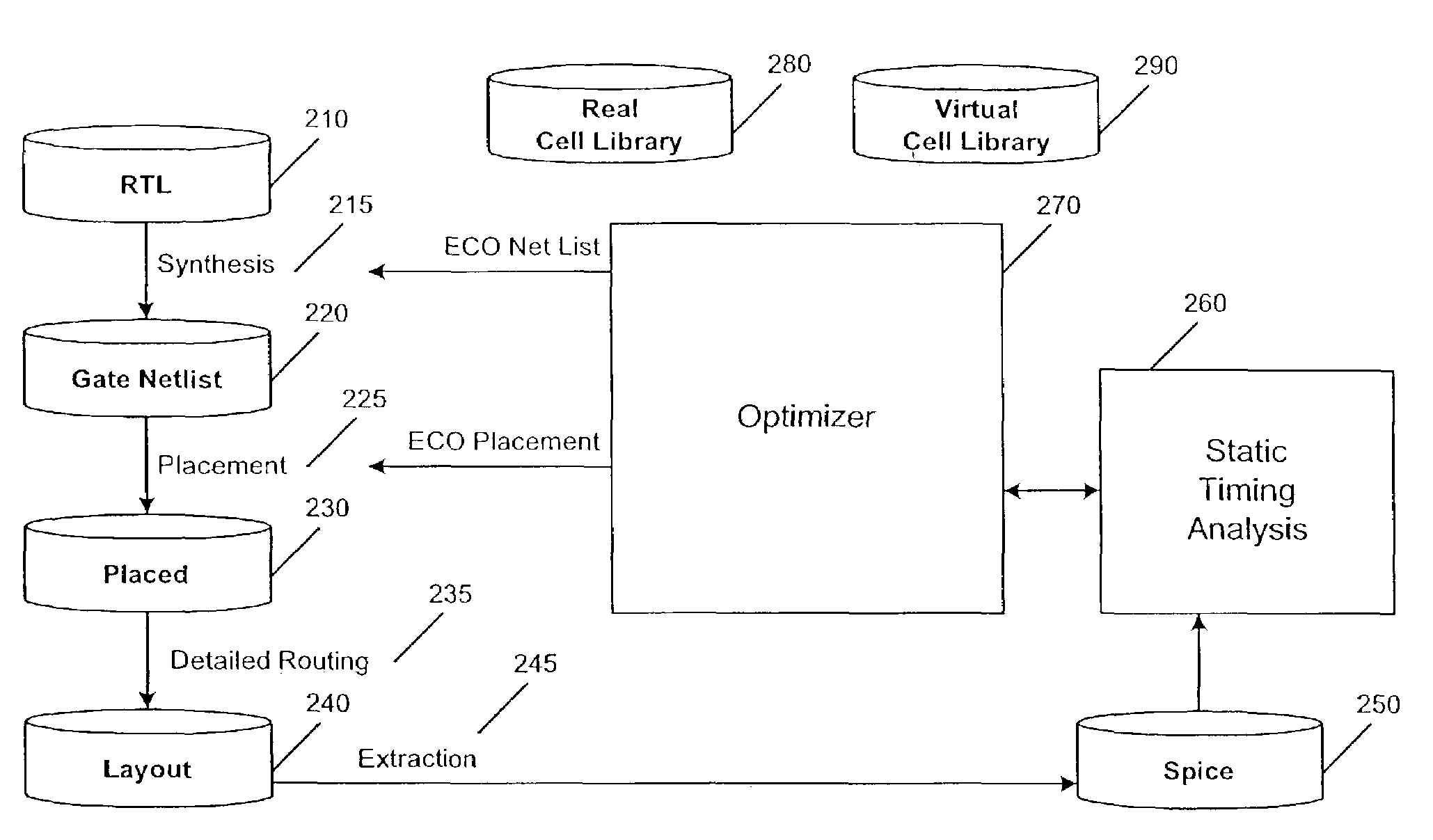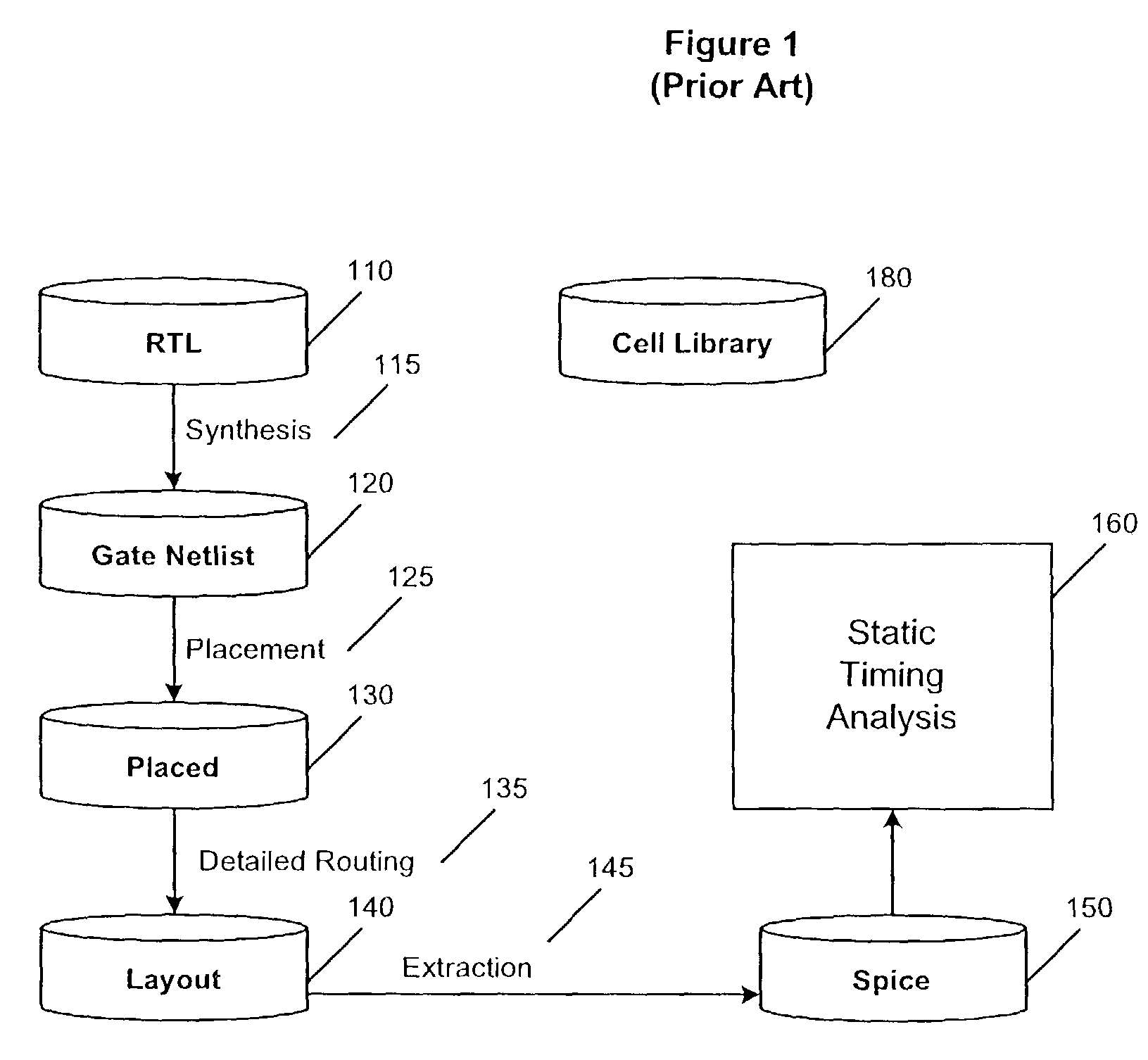Optimization of circuit designs using a continuous spectrum of library cells
a library cell and circuit design technology, applied in the field of tools, can solve the problems of reducing the efficiency of circuit design, so as to achieve the effect of minimal impact on the overall design flow
- Summary
- Abstract
- Description
- Claims
- Application Information
AI Technical Summary
Benefits of technology
Problems solved by technology
Method used
Image
Examples
Embodiment Construction
[0019]The present invention is directed to a method and apparatus that improves the performance of a circuit design. The present invention is preferably directed at a SPR design flow, although it could be applied to other design flows. Cell instances on a critical path are iteratively replaced with functionally equivalent cells having varied characteristics such as drive strength. The process repeats until the desired performance target of the design is reached or until no more improvements can be made. In one embodiment, critical paths are improved by slowly increasing the drive strength of cells on the critical path. When no more improvements can be found, a mechanism is employed to establish if the current design is at a local minimum or a global minimum. First, a slight timing tolerance is applied for a certain number of iterations. This represents a hill climbing technique to accommodate minor variations in the results of static timing analysis. Second, each cell on the critica...
PUM
 Login to View More
Login to View More Abstract
Description
Claims
Application Information
 Login to View More
Login to View More - R&D
- Intellectual Property
- Life Sciences
- Materials
- Tech Scout
- Unparalleled Data Quality
- Higher Quality Content
- 60% Fewer Hallucinations
Browse by: Latest US Patents, China's latest patents, Technical Efficacy Thesaurus, Application Domain, Technology Topic, Popular Technical Reports.
© 2025 PatSnap. All rights reserved.Legal|Privacy policy|Modern Slavery Act Transparency Statement|Sitemap|About US| Contact US: help@patsnap.com



